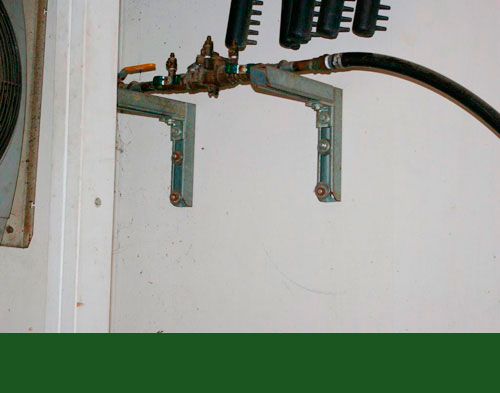Mixing, loading, and washing areas should be well ventilated and should take place in contained areas that are bermed, have impervious surfaces, and roofed to prevent rainfall spreading pesticide residue. Pesticide storage and handling requires additional considerations and is regulated by NYSDEC. See the Pesticide Use section of this web site for more information specific to mixing and loading of pesticides. In addition, pesticide labels will provide information on required PPE that must be used during handling or use of pesticides. See EPA’s PPE for Pesticide Handler’s web page for more information on this topic.
The State of Michigan currently has some of the most comprehensive regulations addressing the construction of mixing and loading areas. This information is part of a useful module developed by Michigan State University designed to help golf courses determine need, size and capacity of mixing and loading areas as part of the MI Turfgrass Environmental Stewardship Program.
Precautions should be in place to effectively respond to emergencies, such as the availability of proper PPE, spill response kits, and emergency wash stations. When mixing or loading, caution should be used and labels carefully reviewed to ensure that chemicals mixed together are compatible. Water used for mixing should be tested for pH to ensure that tank mixes do not expire prematurely due to alkaline hydrolysis. NYSDEC regulations require the use of Backflow Prevention Devices (BPD) when public water is used.









